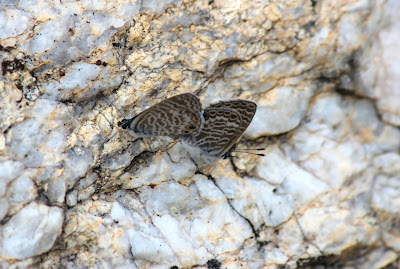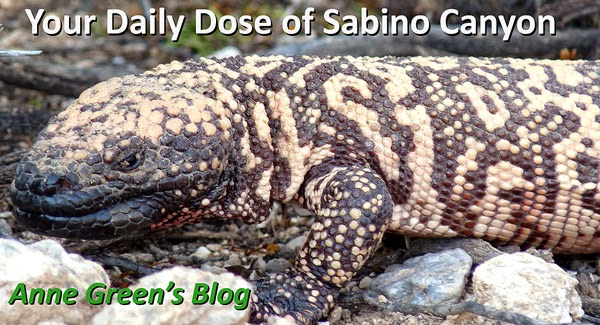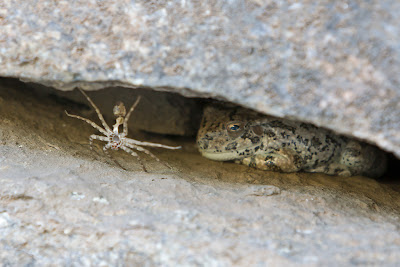Thursday, May 31, 2012
We are all made of stars
Recent celestial events have turned my thoughts to the late (and great) Carl Sagan. (When my Honey-Matt was in high school, he wrote to Carl to ask for advice on what to study. Carl's letter is a treasured possession.) (He said 'Physics', of course.) This audio is great - but a bit long. So I'm going to give you a few days to work it in. Listen not only to Uncle Carl, but especially Phil Hennes and (after the musical interlude) Neil deGrasse Tyson. Science is grand!
Wednesday, May 30, 2012
Tuesday, May 29, 2012
Monday, May 28, 2012
Twin Seed, too!
 |
| Photo by Ned Harris, 4/29/12 |
Sunday, May 27, 2012
Saturday, May 26, 2012
Sounds like a circus act!
 |
| Photo by Ned Harris 5/20/2012 |
Friday, May 25, 2012
New Mexico Thistle
 |
| Photo by Marty Horowitz 4/29/2012 |
 |
| Photo by Marty Horowitz 5/6/2012 |
Thursday, May 24, 2012
Giant Water Bug
 |
| Photo by Ned Harris 4/30/12 |
Wednesday, May 23, 2012
Coral Bean
 |
| Photo by Ned Harris 5/20.2012 |
Tuesday, May 22, 2012
Ellen's speech
My daughter, Ellen Green, wasn't selected to give this speech at her high school graduation ceremony (5/23), so I decided to give her an audience here. Because I'm the mom.
Tonight, we go into the wider world. In many ways, we are the most fortunate generation to do so, benefiting from the efforts of past generations. It is thanks to their ingenuity and determination that our phones have more computing power than the room-sized computers of our parents’ generation, with access to more information than anyone imagined just a few years ago.
Many of us here, too, have personal opportunities because of the dedication and the drive of past abolitionists, suffragettes, and other heroes who refused to accept the status quo. Through their efforts, we have dramatically expanded the circle of compassion and rights. Interracial marriage was illegal in our state until 1962. 1962! - within many of our parents’ lifetimes. These incredible changes have only come about because of the efforts of countless dedicated individuals, striving to bend their piece of the arc of history towards justice.
Yet the world is far from perfect. Our nation is still tottering back to its feet from economic collapse, the product of unfettered greed. We have grown up in a polarized nation. My right to control my body continues to be attacked, and fellow women continue to be subject to the wage gap and underrepresented in key areas of influence. Those of us who don’t fit the status quo of sexuality and gender remain unprotected from discrimination on a range of fronts. American citizens continue to die in the longest war in our history. And we continue to drive global warming with no regard for future generations.
In the face of these crises, we cannot afford to move unquestioningly through the world. We must get informed. One of the greatest opportunities given to us by past generations is the incredible availability of information. Let’s not take it for granted. We cannot afford to take political dogma as gospel, or let TV‘s corporate talking heads do our thinking for us. Let’s examine the evidence, question our politicians, fact check our news. It is easier than ever, if we choose to pull off the blinders of apathy and ideology.
We cannot afford to ignore facts. We must get informed.
We must get informed, and we must get active. After graduation, it would be easy to let ourselves be sucked into the endless pursuit of ‘more’ - more money, more cars, more stuff. But no one ever dies happy that they got the latest BMW. No one is ever remembered for that last bonus they received.
We can all seek something better than that, something larger than ourselves. We can be the next links in the chain of heroes who have bent the arc of history towards justice. We can be part of the chain that has included Susan B. Anthony, Martin Luther King Jr., Rosa Parks, Harvey Milk. The arc of history will not continue to bend without our efforts. We must refuse to let it stagnate or retreat. History has not been kind to those who clung to fear and prejudice. Let us never forget that.
As we sit here tonight, we face this challenge, this enormous opportunity to lead a meaningful life and change the world for the better. History demands nothing less. Future generations demand nothing less. And we must demand no less of ourselves. Thank you.
Tonight, we go into the wider world. In many ways, we are the most fortunate generation to do so, benefiting from the efforts of past generations. It is thanks to their ingenuity and determination that our phones have more computing power than the room-sized computers of our parents’ generation, with access to more information than anyone imagined just a few years ago.
Many of us here, too, have personal opportunities because of the dedication and the drive of past abolitionists, suffragettes, and other heroes who refused to accept the status quo. Through their efforts, we have dramatically expanded the circle of compassion and rights. Interracial marriage was illegal in our state until 1962. 1962! - within many of our parents’ lifetimes. These incredible changes have only come about because of the efforts of countless dedicated individuals, striving to bend their piece of the arc of history towards justice.
Yet the world is far from perfect. Our nation is still tottering back to its feet from economic collapse, the product of unfettered greed. We have grown up in a polarized nation. My right to control my body continues to be attacked, and fellow women continue to be subject to the wage gap and underrepresented in key areas of influence. Those of us who don’t fit the status quo of sexuality and gender remain unprotected from discrimination on a range of fronts. American citizens continue to die in the longest war in our history. And we continue to drive global warming with no regard for future generations.
In the face of these crises, we cannot afford to move unquestioningly through the world. We must get informed. One of the greatest opportunities given to us by past generations is the incredible availability of information. Let’s not take it for granted. We cannot afford to take political dogma as gospel, or let TV‘s corporate talking heads do our thinking for us. Let’s examine the evidence, question our politicians, fact check our news. It is easier than ever, if we choose to pull off the blinders of apathy and ideology.
We cannot afford to ignore facts. We must get informed.
We must get informed, and we must get active. After graduation, it would be easy to let ourselves be sucked into the endless pursuit of ‘more’ - more money, more cars, more stuff. But no one ever dies happy that they got the latest BMW. No one is ever remembered for that last bonus they received.
We can all seek something better than that, something larger than ourselves. We can be the next links in the chain of heroes who have bent the arc of history towards justice. We can be part of the chain that has included Susan B. Anthony, Martin Luther King Jr., Rosa Parks, Harvey Milk. The arc of history will not continue to bend without our efforts. We must refuse to let it stagnate or retreat. History has not been kind to those who clung to fear and prejudice. Let us never forget that.
As we sit here tonight, we face this challenge, this enormous opportunity to lead a meaningful life and change the world for the better. History demands nothing less. Future generations demand nothing less. And we must demand no less of ourselves. Thank you.
Monday, May 21, 2012
Sunday, May 20, 2012
Snakes on a blog
 |
| Photos by Marty Horowitz 5/6/2012 |
Saturday, May 19, 2012
Tail of a Zebra!
 |
| Photo by Ned Harris 4/29/12 |
Friday, May 18, 2012
Off to School
 |
| "Off to School" Danielle's Photography |
Thursday, May 17, 2012
Another in the Mallow Family
| Photo by Joan Tedford |
The bird from yesterday's post: a male Pyrrhuloxia.
Wednesday, May 16, 2012
Name that bird!
Tuesday, May 15, 2012
Gneiss spot for an egg casing
 |
| Photo by Marty Horowitz, Spotting by Deb Langeloh 5/6/12 |
Monday, May 14, 2012
18 and you're out the door!
 |
| Photos by Don Eagle 4/20/2012 |
Mama Black-chinned Hummingbird and two 'babies' who've outgrown their nest! Don is a docent at Tohono Chul and he took the photos there. (These and other hummingbird species nest in Sabino Canyon, so I'll allow it!) Thanks to Don for letting me post his photos and for Peggy Wenrick for getting them to me.
Sunday, May 13, 2012
Fruit of the Creosote Bush
| Photo by Matt Ball 4/27/2012 |
Saturday, May 12, 2012
Get your pollen on!
 |
| Photos by Ned Harris 4/28/2012 |
 |
| Always click for larger views |
White-winged Doves are the primary day-time pollinator of Saguaro flowers - and you can see why! Ned thinks their call sounds like: "Who cooks for you?" I think there are more w-sounds, like a rather plaintive: "When will we woo?" Whatever works for you!
Friday, May 11, 2012
In the Mallow Family
 |
| Photo by Matt Ball 4/27/2012 |
Thursday, May 10, 2012
Got Guides?
 |
| Photo by Ned Harris |
To find the SCVN office, face the visitor center and go to the left of the entrance overhang.
If you can't make this pick-up date and don't know anyone who can get a copy for you, don't despair; there will be other opportunities to get your guide. I'll let you know about other opportunities as they become finalized.
Please note: The Guide is NOT available in any store. Proceeds benefit SCVN's educational programs.
Wednesday, May 9, 2012
Another Mint
| Photos by Joan Tedford |
Tuesday, May 8, 2012
Snapdragon Vine aka Roving Sailor
| Photo by Matt Ball 4/27/2012 |
Monday, May 7, 2012
These Marines aren't Blue!
 |
| Photo by Marty Horowitz 4/25/2012 |
 |
| Photo by Ned Harris 4/25/2012 |
Sunday, May 6, 2012
Super Sun(set) and Super Moon!
| Photos by Matt Ball or Ellen Green 5/5/2012 |
| It really was that orange! |
The moon was so bright, we were casting shadows! Hope you had an excellent view. Some photos from around the world.
Saturday, May 5, 2012
Pipevine Swallowtail Caterpillar
 |
| Photo by Fred Fisher |
Friday, May 4, 2012
Tree Lizard's Rock
 |
| Photo by Ned Harris 4/25/2012 |
Don't forget to check out the Super Moon Saturday evening. (And get some photos : -)
Thursday, May 3, 2012
Cream Cups
| Photo by Joan Tedford |
Wednesday, May 2, 2012
A Leadwort by any other name...
| Photo by Joan Tedford |
At first glance, it looks a bit like the Desert Phlox (Phlox tenuifolia) below. But take a closer look and you'll see many differences.
| Photo by Matt Ball |
Tuesday, May 1, 2012
Eastern Collared Lizards
 |
| All photos byNed Harris 4/25/2012 |
This male was a bit more skittish and the photographers had to make their way quickly and quietly. If you had a lizard pattern scanner, you could easily tell that both photos above are of the same lizard. Contrast with the male in the photos below, who was our third and final Eastern Collared Lizard for the walk.
Have a smart phone and know how to use it? Have a heart for herps of all stripes? See HerpCount.org and learn how you can contribute to research on herps right here in Tucson. We've got some of the world's best herpetologists here and, of course, the world's best herps!
Subscribe to:
Posts (Atom)










